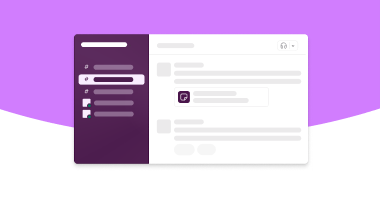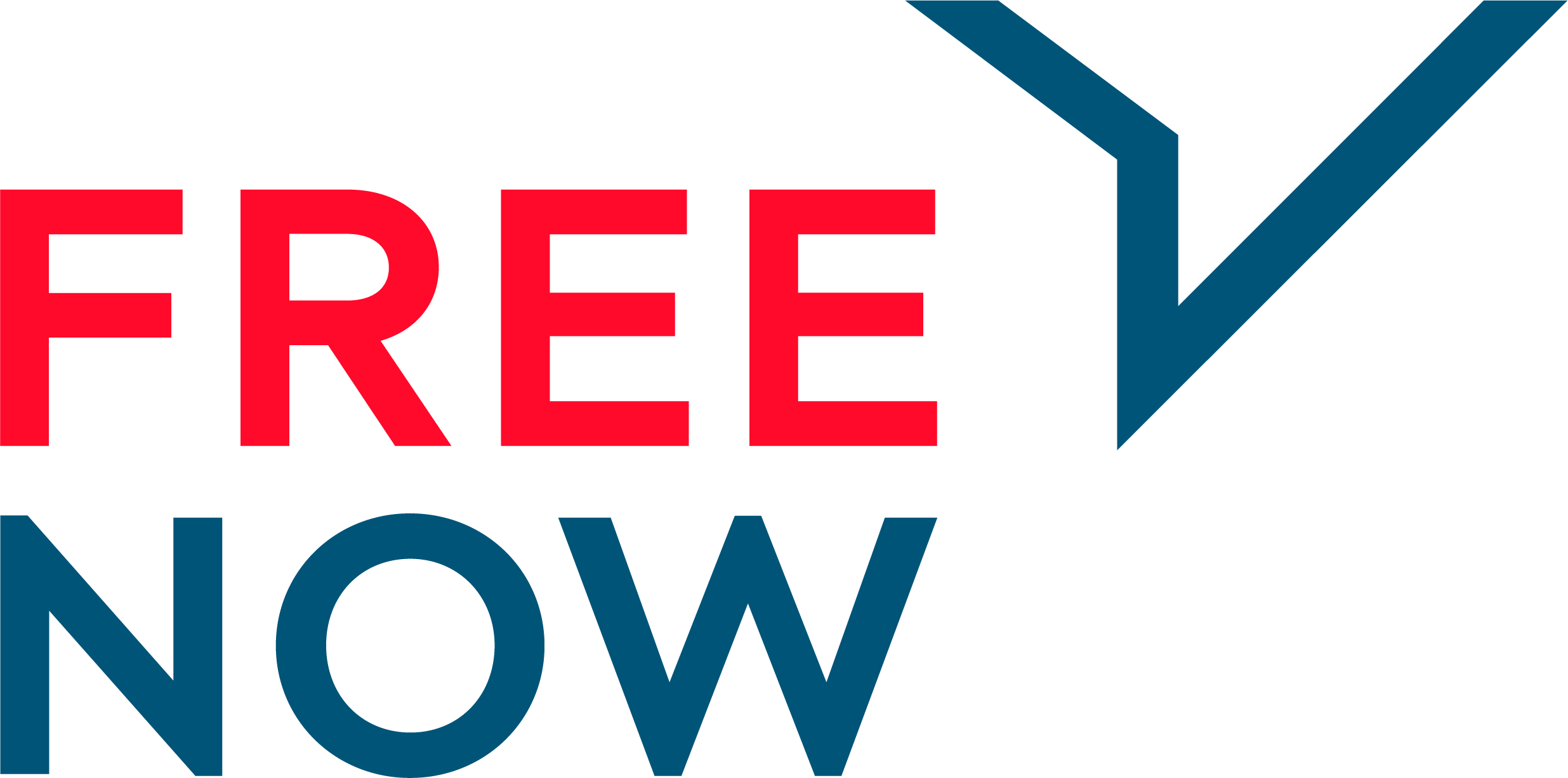FREENOW launched in 2009 as the world’s first taxi app that establishes a direct connection between the passenger and driver. The app is now available in nine countries around the world, and also offers car sharing, e-scooters, regular scooters and e-bikes on the platform in addition to taxis. This means that FREENOW has the largest number of vehicles and is the leading mobility super-app in Europe. There are 48 million passengers using the app today in more than 150 cities.

This success did not come overnight of course, and not without some hard work. Agility has been an integral part of the internal organization right from the start, and the company continues to look for ways to optimize its internal processes and to improve its own ways of collaborating.
The employees had still been using Skype to communicate at work by 2014, which had become an administrative nightmare. Slack was therefore introduced as a new collaboration platform, accelerating and improving the processes for collaboration between the various project teams in no time as a result. However, nobody would have guessed how indispensable Slack would soon become for virtually all aspects of FREENOW’s business processes.
FREENOW shares its breaking company news and updates in Slack, with everyone encouraged to take part in the conversation. The leadership team is easy to reach and open to suggestions, which promotes innovation and results in greater satisfaction among employees. Everyone can also work quickly and effectively since all of the most-used apps are integrated directly into Slack.
We explain below how Slack helps FREENOW work at its best and assists in creating a company culture where everyone’s voice can be heard.
Apps facilitate effective work
FREENOW attaches a lot of importance to transparency, and Slack helps it to increase this. The company has created special Slack channels, virtual locations for sharing news, tools, and files, that cover everything from company announcements to warnings of incidents.
If an incident does occur such as a fault with the app, an automated message is sent to the company announcements channel #announcements where all staff can see this. There are no secrets. This ensures that everyone stays informed. The tech team on duty also receives the notification, and the team members discuss and rectify the problem directly in the channel.
“Slack forms the basis for our communication. Every new employee is in Slack from day one, and is also therefore in the right channels. This makes it really easy for us to share the right information quickly”, says Jörg Baldzer.
“The next logical step was to integrate the IT team’s apps and processes into Slack”, he goes on to say. “Most of our communication takes place in Slack. It is our digital workplace and everyone knows the user interface. It soon became clear therefore that Slack would be our UI for our back office automations. We also wanted to create something that would enable all employees to work from home without any problems in the future”, says Jörg Baldzer. This step soon paid off when the pandemic started. FREENOW was able to have its employees work from home without any major effort. The setup was already in place.
One example of the integrations the company uses with Slack is the project management and ticketing system Jira. “You usually get an email when the ticket status changes in Jira, but this is highly impractical for us because no one looks at this,” says Baldzer. “Status updates and new comments result in a flood of emails that eventually no longer becomes manageable.”
With the Jira Slack app, everyone from the development team through to the office manager receives all notifications directly in Slack, allowing them to keep up with the task and resolve problems more quickly.
FREENOW is now able to use all of its most important software tools within Slack channels, through apps for Confluence, Workday, Google Drive, Zoom, Miro, Envoy, Officevibe and Salesforce. Slack workflows and bots also make day-to-day working easier and remind team members of tasks or provide a welcome for new employees.
The FREENOW team is able to work (on its own or together with others), hold meetings, and share files without leaving Slack, which has increased efficiency enormously. The app integration has also helped the company speed up internal approval processes significantly.
Jörg Baldzer and the IT developer team have gone even further: As well as using existing apps they are also creating their own ones. The AV Slack app that they have programmed themselves optimizes the process for requesting a Zoom webinar or a Slido event. FREENOW hosts numerous webinars every month, and these had to be created manually up until a few years ago, which took up an enormous amount of working time.
Anyone is now able to access the A/V Slack app with a slash command and enter all the details required for the proposed webinar. The request is then forwarded to the closed #av channel where the app checks if another webinar is already taking place at the same time. If there is no other webinar scheduled then the link to the new webinar is created automatically.
“The employee gets a zoom link automatically and doesn’t have to worry about anything else. This not only saves a lot of manual work on the IT side, but also eliminates human error. That is really practical”, says Jörg Baldzer.

“As well as saving us time, all of the apps that we have in Slack also change the ways that we work and make our work processes easier. This allows us to work much more quickly and smoothly.”
Work runs smoothly with Slack and everyone can take part in the conversation
FREENOW’s mission is to guide passengers and drivers through cities more easily. This is no easy task, but one that requires project teams spread across different geographic regions and in different time zones to work closely together. Slack channels provide FREENOW’s employees with a central location for collaboration, and everyone is able to take part in the conversation.
For Izzie O’Keeffe, FREENOW’s office manager in Barcelona, this is a welcome change compared with working in more traditional companies with rigid hierarchies. While these companies had used chat apps to a limited extent, their main means of communicating with the leadership team was still via email. Transparent and open communication was just not possible as a result, and it could take weeks until decisions were actually made.
“The switch to Slack was staggering for me. When I started working at FREENOW, Slack allowed me to reach key people when I needed to, ask specific questions, and talk to upper management without having to worry that I’m taking up their valuable time,” says O’Keeffe.
Laura Neusser, the internal communications and employer branding manager at FREENOW, agrees: if you want to make sure that something is seen, you post it in Slack. She posts any important announcements for employees in Slack channels, and uses Slack’s message activity to find out how many people have seen and responded to her post. The best thing, she says, is the comment function: “While email represents one-way communication with little interaction or exchange, Slack encourages open dialogue. That is important to us, because everyone should be able to make a contribution, scrutinize things, and ask questions in such a way that anyone can see the answer and benefit from it.”
FREENOW has been using Slack since the start of the coronavirus pandemic to help its employees working from home stay connected with each other and the company. The Internal Communications project team has constantly been coming up with new ideas to promote a healthy working environment, from workout tips to calls to share funny pictures of employees’ pets. Individual employees are now joining in and asking questions aimed at the entire company or posting their own surveys.

Onboarding of new employees and farewells to leavers also take place to some extent in Slack. FREENOW’s HR and IT departments use a closed Slack channel to share notes on the current state of affairs or preparations for arrivals or taking leave of employees. Among other things, an automated message is used to notify office managers from the individual sites about new team members.
“As well as simplifying communication between both departments, this also speeds up the processes, particularly when it comes to remote onboarding”, says Jörg Baldzer.
All new hires starting at the company are invited to a Slack channel. O’Keeffe has for instance created the channel #bcn-newstarters for the team in Barcelona. Newcomers are introduced there with some background info also added, and the other employees can welcome their new colleagues to the thread. O’Keeffe also uses the channel once a week to ask how things are going.
“This continuous contact is very important because we are no longer all in the office where people are constantly meeting each other. Slack ensures that cooperation and connection do not fall by the wayside”, finds O’Keeffe.
“The ability to reach out to the leadership team via Slack was completely new to me and it really is great.”
Help is just a click away with Slack
FREENOW has help channels for almost every department, e.g., #ask-accounting for accounts, #ask-people for HR queries and #ask-IT for IT issues. The company has also created Pal, a user-defined Slack app for answering the most common HR queries. Users send their query and receive an automated answer immediately, or a helpdesk ticket is created for them in the background and processed by the team members responsible.
“The degree of automation enabled by Slack is fantastic. It allows us to focus on the really important tasks.”
Employees are also encouraged to help one another. FREENOW has created communities for its employees where people with similar backgrounds and like-minded individuals can make contact with each other and discuss ideas as well as launch initiatives. Each grouping has its own separate Slack channel. The company has a #women-community, #parents-community, #BIPOC-community, and an #LGBTQ-community. There is also a #wellbeing-community where members are able to talk openly about any mental health issues and share tips with each other.

Engage with external partners using Slack Connect
FREENOW works closely with lots of outside companies, including software development companies and marketing agencies. Before Slack, the project teams used emails to communicate with external partners, which made quick decisions and close collaboration more difficult.
“Whenever we used emails to communicate with partners, we sometimes only received a response hours or days later. That artificially and unnecessarily prolonged our project times”, says Jörg Baldzer.
Slack Connect has enabled FREENOW to expand Slack’s channel-based messaging system securely and simply to those outside the company. Slack workspaces can now be used to collaborate with external partners to work effectively in real time. The company is currently using Slack Connect with more than 200 partner companies and has plans for even more.
“Each partner is able to configure and add people to their Slack Connect channel page. That makes it a much more flexible option than if we had to invite them to one of our channels as a guest,” says Baldzer.
“Email is still used for communication but this has been very much reduced. I only send 2-3 emails a month - we can collaborate much more effectively with our partners using Slack Connect.”
FREENOW encourages agility and resilience in its project teams. This makes them adaptable in the face of change. One of the company’s values is “decisive action,” and Neusser emphasizes that Slack is crucial in this respect. “Slack means that we are able to connect with each other quickly and easily, have short decision-making processes, flat hierarchies, and are far more efficient as a result,” she says. “We don’t just sit around waiting for emails to arrive. We can be proactive ourselves and send a Slack message to all our internal contacts, up to and including our CEO, and be certain that we will receive a prompt response.”













